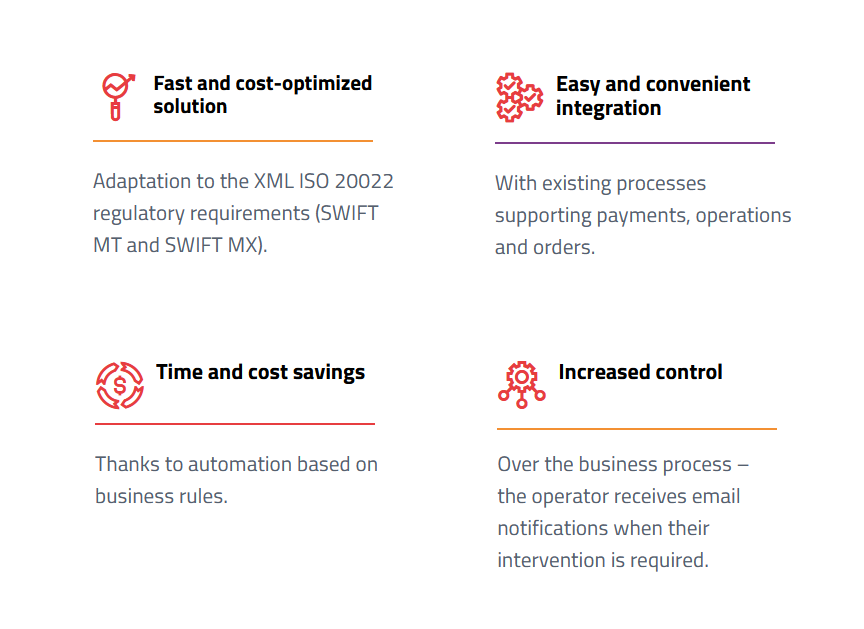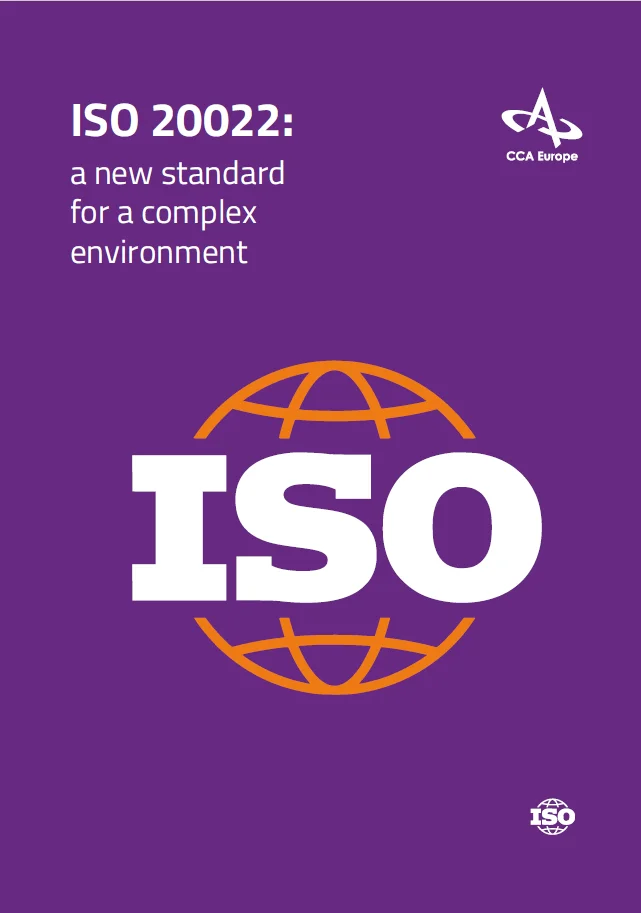MT to MX converter for ERP: a lifeline for corporate accounting
If corporate back-office systems are not upgraded in time for the implementation of ISO 20022, we can expect critical payment bottlenecks in large companies. How to convert SWIFT messages to upgrade corporate ERP systems?
This article discusses:
- the challenges of ISO 20022 for global settlements
- the specific challenge for corporate ERP payment systems
- updates to be made before March 2023 and consequences if ERP is not ready
- a low-cost solution that will keep corporate settlements running smoothly
From November 2022, a new format for cross-border transfers comes into force, SWIFT MX, which is compliant with the ISO 20022 standard. It is based on an XML structure and enables exchange of structured data in a common, more flexible standard.
The new ISO20022 messaging standard will enable control and transparency in international cash management, not only between financial institutions. By creating a common language and model for payment data, ISO 20022 significantly improves the transparency of transactions and increases their efficiency. Corporate customers will also benefit enormously from ISO 20022, as they will finally have the ability to add additional information to cross-border payments that will improve cash flow forecasting and reconciliation for each payment.
However, the path to business benefits involves a huge amount of work, not only for financial institutions. The changes will include the entire payments ecosystem, along with corporate IT departments that need to adapt complex back-office systems such as ERP to process both SWIFT MT and SWIFT MX messages.
A revolution in ERP systems
Every day, large corporations retrieve banking statements that contain several hundred to several thousand records, in various currencies. As long as the SWIFT MT standard is in place, corporate ERP interfaces perform this operation automatically.
From November 2022, the transition period for the implementation of ISO 20022 will apply. Payment messages in the old and new standard, SWIFT MT and SWIFT MX, will begin to function side by side. ERP systems that are left unprepared for “translating” between them will start to reject unknown messages. Downloading statements could stop altogether, or errors will start appearing in statements.
Companies that settle 1,000 invoices a month will probably face the unavailability of automatic statement download. The accounting staff will simply handle the clearing manually (probably working overtime). However, the larger the company, the greater the data volume, especially in the case of retailers or producers. In companies that have to account for 1,000 transactions a week, the lack of automation can seriously disrupt the flow of transaction settling.
For example, a debt recovery company runs a single account to collect payments from its clients. The firm downloads the statements to settle how much each client has to pay… which amount, and its accounting system assigns several thousand payments per day to individual debtors. The accumulation of backlogs from just a single day can prove disastrous not only for back-office processes. When dissatisfied customers start storming the customer service center, the company’s image will also suffer.
MT to MX: one small amendment? Think twice!
According to experts quoted in The Global Treasurer portal (2022), one of the major challenges of the new standard for ERP systems is the need to fully structure addresses in transfer messages. As explained in the article MT/MX message conversion: parlez vous ISO 20022?, the “new” message (SWIFT MX) has a multi-level structure. This allows for the easy and unambiguous aggregating of its elements and assigning them correctly to the “old” format (SWIFT MT).
On the other hand, the information clusters in the “old” format do not always have clear rules for interpreting (“unpacking”). For example, the address field is an all-in-one field, but to meet the requirements of the proposed new ISO 20022 structure, the building number and the street name must be in separate fields. Therefore, the mandatory fields for payments should be modified not only in banking systems but also in ERP systems.
Large ERP system vendors, such as SAP, Oracle, and Microsoft, have already introduced updates to support ISO 20022 MX payment messages. However, it is possible that minor vendors will not make it before November 2022, as shown by delays in the implementation of other requirements, such as PSD2.
The budget needed to introduce the necessary changes could also prove to be a problem. According to the Global Treasurer (2022), the cost of converting the current address data in Line 1 to a fully ISO-compliant format could cost half a million euros, excluding tests with banking partners! However, should ERP providers not complete the upgrade, no company will keep on track with their settlements.
The workaround: MT to MX message converter for ERP
Converters supporting validation, enrichment, and translation from any standard or format into any other are already available. One of them is the native SWIFT converter, which will certainly be appreciated not only by financial institutions, but also by international corporations. However, its complexity and cost of use means it is not a good fit for everyone.
Smaller corporations can take advantage of an independent converter of MT/MX messages. It is a stand-alone business application that easily integrates with the company’s ERP via API. A good example of such a solution is our proprietary system, Payres.

As a SWIFT MT to MX message converter, Payres enables full-scale processing of international payments in accordance with XML ISO 20022. Those who seek a MT to MX converter online can find Payres interesting, as it is a SWIFT-independent application. As a standalone Java-based application, it offers convenient integration with back-office solutions that do not support the new format, or do so only partially. The solution works in Real-Time Transform (RTT) flow mode, and the support of the Drools rules engine minimizes the inevitable delay caused by serial inclusion of the converter in the payment message flow.
Efficient cross border payments in the world of ISO 20022
SWIFT estimates that by 2025, 80% of global high-value payments will be handled using the new standard. The task of adapting ERP to support both the old MT format and the new format is the responsibility of the corporate IT department. For a cost-efficient way to avoid accounting backlogs, you need a “lightweight” MT/MX message broker. Such a solution will not reduce the efficiency and flexibility of your ERP system, and requires no complicated implementation process.
So far, however, there is no strong voice in banking that would propose but a framework for using rich data. Will the real race to leverage the potential of ISO 20022 begin in March 2023 when most European financial institutions start using MX basic features? To use them, however, they will have to overcome the obstacle of consistency in the ISO 20022 standard. For details, see our blog post: on ISO 20022 enhanced data.
Regardless of what the future brings, Payres is a cost-optimized solution that will allow smooth transaction settling, whether the messages come in the new, or the old MT format. In addition, with the help of Payres you can spread the costs of updating the ERP system even over several years. If you want to know more, send us an email, or schedule a 15-minute call, no strings attached.

Learn more about the concept of Payres
as an ISO 20022 SWIFT MT/MX converter from this free ebook:

